.png)
Phrasal Verbs English
A phrasal verb is a verb like pick up, turn on or get on with. These verbs consists of a basic verb + another word or words. The two or three words that make up a phrasal verb form a short "phrase" - which is why we call them "phrasal verbs". But a phrasal verb is still a verb. Look is a verb.

Differences between Phrasal Verbs and Prepositional Verbs Akademia
It is probably not worth worrying about whether rely on is a phrasal verb or a prepositional verb, especially if you just want to remember what it means. Most of the major dictionaries for learners of English take this approach: both classic phrasal verbs and prepositional verbs are labelled 'phrasal verb'.
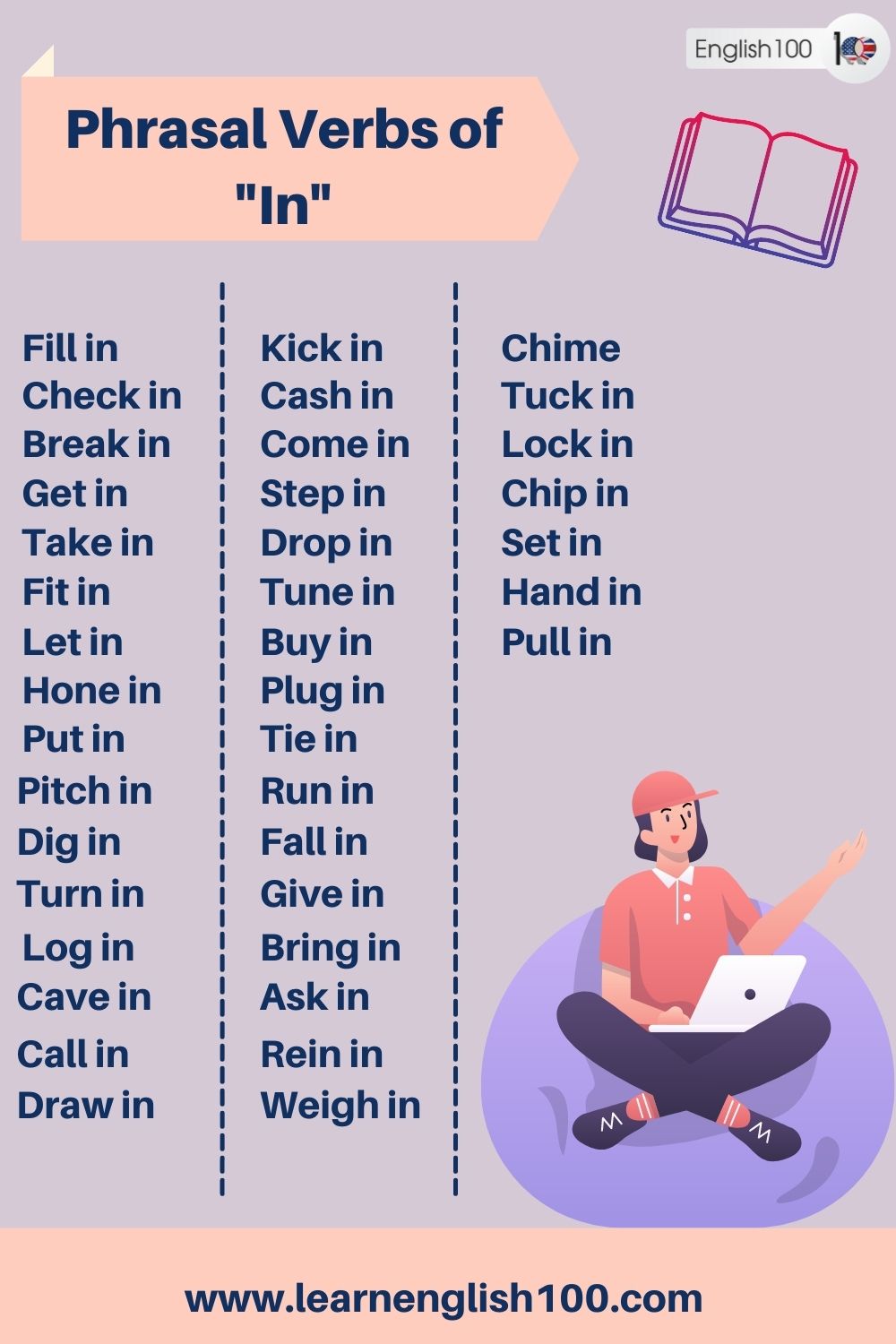
Mastering Prepositional Phrases A Comprehensive Guide! English 100
This phrasal-prepositional verb means to have an idea or find a solution after thinking for a long time. Examples: Correct: Kelly came up with a wonderful idea for the school play, and her teacher picked it! Incorrect: Kelly came a wonderful idea for the school play up with, and her teacher picked it! Correct: Einstein thought and studied a lot.

verb preposition 1 7 E S L
Phrasal verbs and multi-word verbs - English Grammar Today - a reference to written and spoken English grammar and usage - Cambridge Dictionary

100+ Important Prepositional Verbs for Improving your English Fluency
Phrasal verbs are very common in English, especially in more informal contexts. They are made up of a verb and a particle or, sometimes, two particles. The particle often changes the meaning of the verb.. However, it might be confusing to think of phrasal verbs as "using prepositions" as adverb particles. It might be better to think of these.

Useful Prepositional Phrase List in English ESL Forums
Position of the object of a phrasal verb. With a phrasal verb (verb + adverb), the position of the object (a noun) is flexible, i.e. it can sit either between the verb and the adverb or after the adverb: She took her coat off. (The object her coat is between the verb and the adverb.) or. She took off her coat.
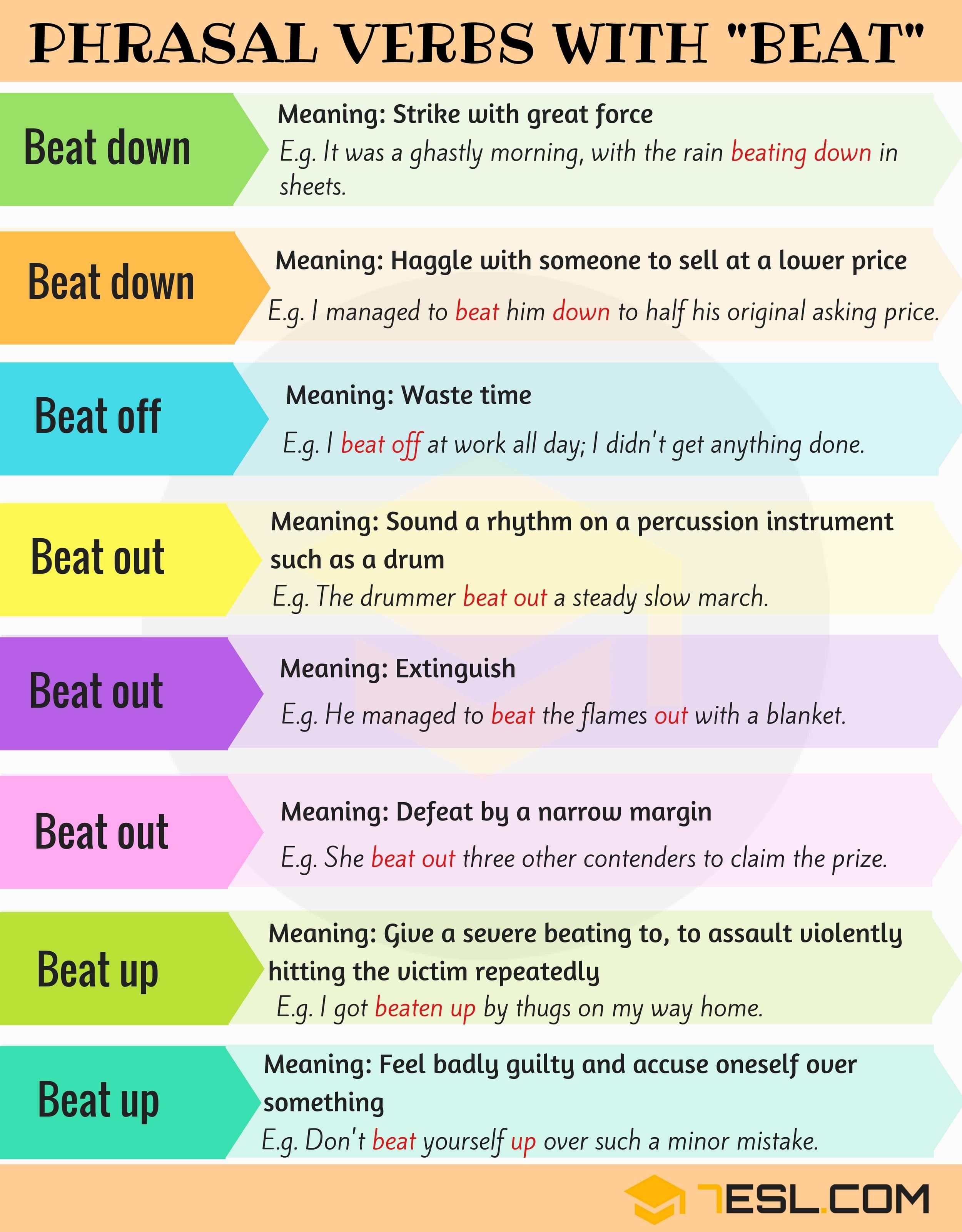
Phrasal Verbs Meanings And Examples sitecustom
A phrasal preposition is a combination of a preposition and an adverb or particle. Some common examples of phrasal prepositions include "in front of," "in spite of," and "by means of.". Phrasal prepositions can express a wide range of relationships between people, objects, and ideas, including location, time, cause and effect, and.
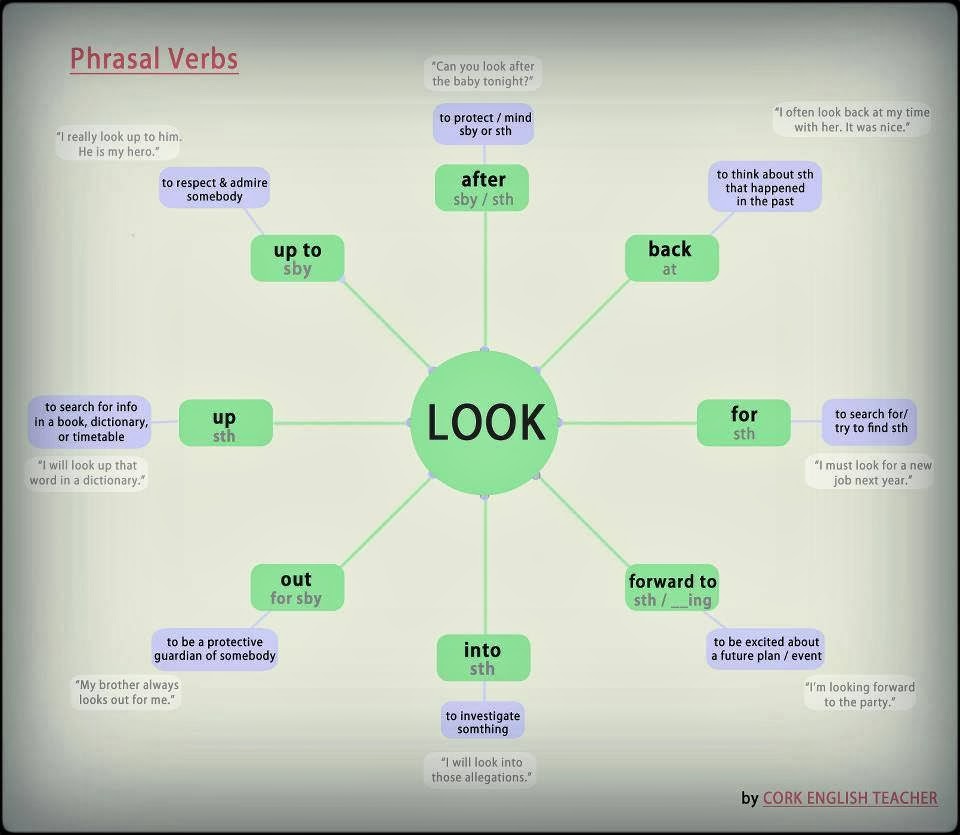
Click on SOME PHRASAL VERBS & VERBS + PREPOSITIONS
What is a prepositional verb? A prepositional verb is a verb that is followed by a preposition. The meaning of these two words together is usually very similar to the original meaning of the verb. For example, To worry. To worry about (someone or something) Comparing a prepositional verb to a phrasal verb

Prepositions with Verbs Common Collocations with ABOUT 7 E S L
Phrasal Prepositional Verbs ("come up with," "look up to," "do away with," "run up against," etc.), consist of a verb followed by two elements: a particle and a preposition. All phrasal prepositional verbs are transitive, hence, are followed by objects. See examples in this entry!

PhrasalPrepositional Verbs Meanings and Examples Akademia
Phrasal and prepositional verbs appear identical in active transitive statements in which they are followed by a noun. It is only when we replace the noun with a pronoun, or try to put the sentence into the passive, that the differences become more clear, and the problems arise. To see the differences in transitive contexts, compare the.

What are Phrasalprepositional verbs? Download useful list Verb
In the traditional grammar of Modern English, a phrasal verb typically constitutes a single semantic unit consisting of a verb followed by a particle (examples: turn down, run into or sit up ), sometimes collocated with a preposition (examples: get together with, run out of or feed off of ). Phrasal verbs ordinarily cannot be understood based.

What are the differences between Phrasal and Prepositional Verbs
Phrasal Verbs and Prepositional Verbs. A phrasal verb is made up of two parts: a base verb followed by an adverb particle. Examples are: ask out, bring about, bring up, call back, call in, call off, figure out, fill out, find out, pass out, pick out, pick up, point out, put away, put back, put off, put on, put out, take off, take out, take over.

Lesson on PREPOSITIONAL VERBS & PHRASAL VERBS (make out, stay in, sit
What is a phrasal verb? A verb (e.g., "It goes") becomes a phrasal verb with the addition of one preposition (e.g., "The light goes out") or more (e.g., "She goes out with him"). Each additional preposition completely changes the meaning of the verb. Example: goes - as in "The train goes west." goes -> "moves" Example: goes out - as in "The light goes out." goes out.
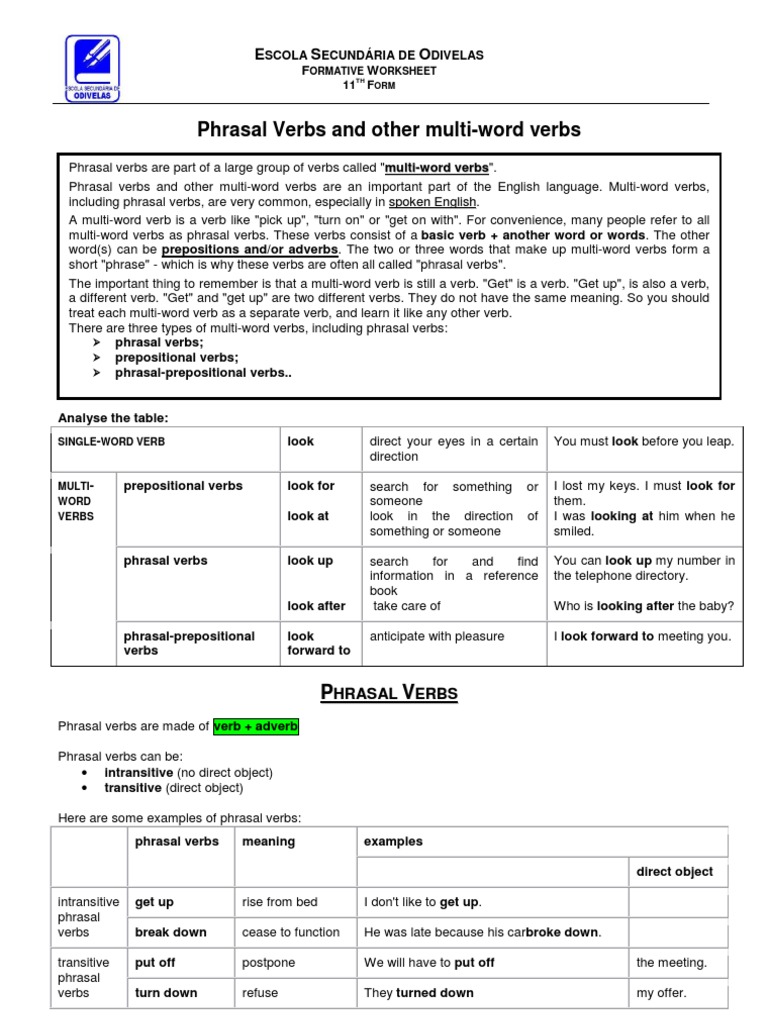
Ficha PhrasalPrepositional Verbs Phrase Object (Grammar)
A phrasal verb is a type of compound verb made up of a verb (usually one of action or movement) and a prepositional adverb—also known as an adverbial particle. Phrasal verbs are sometimes called two-part verbs (e.g., take off and leave out ) or three-part verbs (e.g., look up to and look down on ).
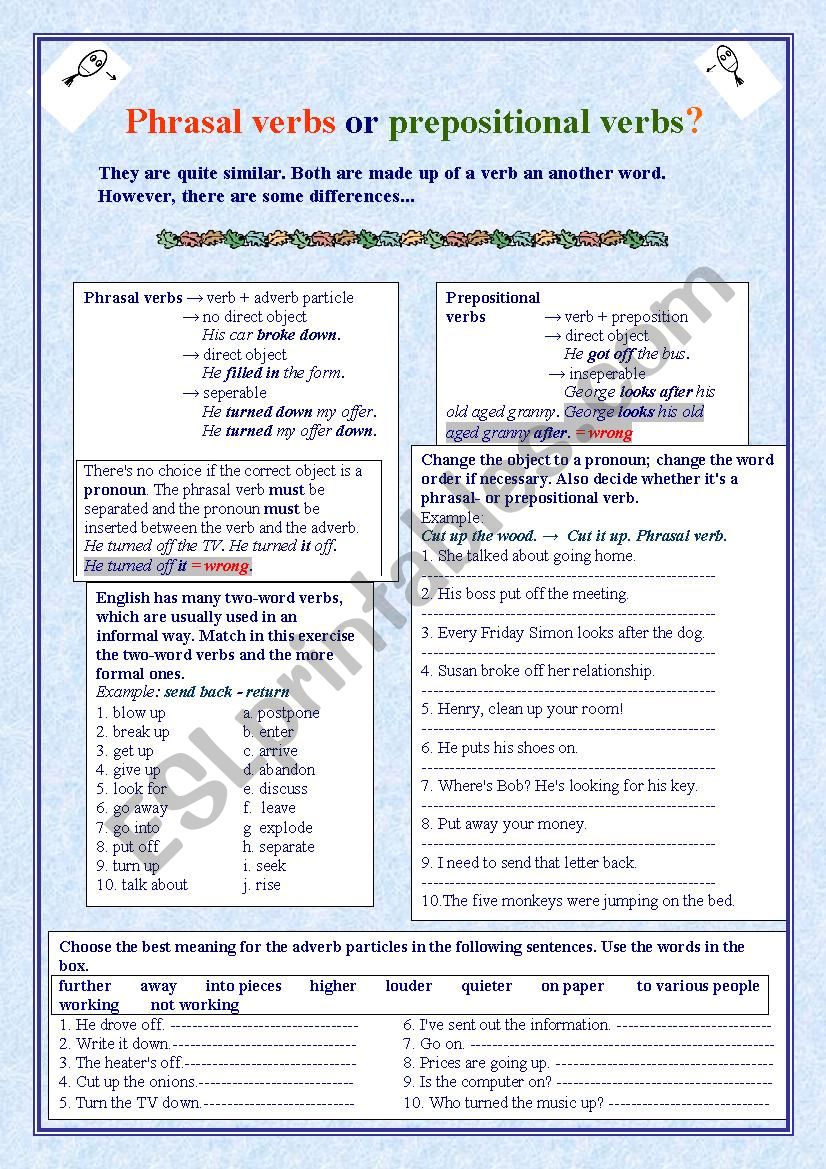
Phrasal verbs or prepositional verbs ESL worksheet by a.antonides
What is a phrasal verb? A phrasal verb combines a normal verb with an adverb or a preposition, referred to as the particle of the phrasal verb, to create an entirely new verbal phrase—the phrasal verb. The meaning of a phrasal verb is usually unrelated to the meanings of the words that compose it, so think of a phrasal verb as an entirely new and independent word.

Prepositional Phrase List of Useful Prepositional Phrases in English
Verbs that take a particle or particles are called phrasal or prepositional verbs. Particles are adverbs that describe the verbs and prepositions (words like in, on, at, up, down, etc.). A preposition takes an object, but an adverb does not. So, when we use the preposition on we might say; The pen is on the table (table is the object).